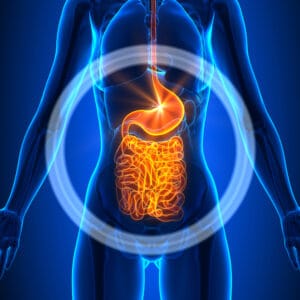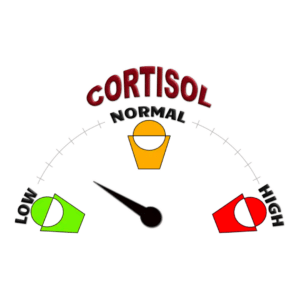Intermittent fasting (IF) has gained popularity over the past decade. In my clinic, I have found it a powerful tool towards achieving weight loss and optimising health primarily because the time-restricted feeding subcategory of IF, which most of my clients prefer, does not involve calorie-restriction. Also, once clients become accustomed to it, they report feeling energised and start to thrive. More importantly, it gives clients the flexibility to choose a pattern of eating that suits them.
There are various subcategories of intermittent fasting, including:
Alternate day fasting
This is more commonly known as the 5:2 diet and was popularised by British journalist and medical doctor, Michael Molsey1-2. It is called the 5:2 diet because five days of the week are normal eating days, while the others restrict calories. Trials of alternate day fasting and the 5:2 diet have generally shown reductions in body weight, accompanied by decreases in LDL cholesterol, triglycerides, blood pressure and insulin resistance3.

Time-restricted feeding
This entails fasting every day for a 14- to 20-hour period and restricting your eating to within a certain window of time, ideally a period of 8 hours4. The effects of time-restricted feeding have only been tested in a limited number of human trials to date4-8. These have shown that this way of eating reduces calorie intake (without calorie-counting), shows a sustainable weight loss and significant decreases in fat mass (without changing lean mass) in resistance-trained men5.
In the latest study… 12 weeks of time-restricted feeding… decreased body weight and produced significant reductions in blood pressure relative to the control group.
In the latest study, which is the first to examine the impact of time-restricted feeding on body weight and metabolic disease risk factors in an obese population, 12 weeks of time-restricted feeding (limiting food to between 10:00 to 18:00 daily) decreased body weight and produced significant reductions in blood pressure relative to the control group8. The findings also indicate that limiting the daily eating window to eight hours a day reduces calorie intake by 300 calories without intentional calorie-counting8.

Benefits of Intermittent Fasting
It helps promote insulin sensitivity and weight loss.
Insulin sensitivity refers to how sensitive the body is to the effects of insulin9. People with low insulin sensitivity (also known as insulin resistance) need more insulin to keep their blood glucose levels stable9,10. Every time we eat food, the carbohydrates (and, to a certain extent, proteins – but the process is much slower) are broken down into glucose, which enters the bloodstream11,12. When this happens, the pancreas reacts by releasing insulin, which allows the glucose from the blood to enter cells where it can be used for energy9,10. It also enables glucose from the blood to be stored by the liver and muscles as glycogen, where it stays until blood glucose levels fall again9. If there is still glucose in the bloodstream after it has entered cells and been placed in storage, this is turned into saturated body fat.10,11
Insulin resistance is most common in people with pre-diabetes, metabolic syndrome and type 2 diabetes9,10,11. These people produce more insulin than non-diabetic people, resulting in a higher ratio of body fat to muscle. The surplus of insulin makes the cells of the body become less responsive and more resistant to it, and this is why blood sugar levels in type 2 diabetic/pre-diabetic individuals are high9,10,11.
Snacking and eating all day is a risk factor for insulin resistance, which creates higher insulin levels and inevitably weight gain.
Snacking and eating all day is a risk factor for insulin resistance, which creates higher insulin levels and inevitably weight gain12-14. When your body is fed every few hours, the food from these meals will provide a constant fuel source and your body will burn energy from these meals, rather than from fat stores. When you eat too soon after a previous meal, insulin levels rise too soon, hindering fat burning and causing calories to be stored rather than burned12-14. Typically this is when energy levels will fall, leading to cravings.

Eating less often and allowing ample time between meals will force your body to burn stored fat12-14. About 3 to 4 hours after a meal is when insulin levels should be where they were before the meal and the liver should be mobilising glycogen into blood sugar. This is when the body starts to burn fat that would otherwise go into storage. Intermittent fasting is not about calorie-counting. It is about the time that you are fasting. When your insulin levels drop, your body switches fuel sources. During a fast, once you have burned through your body’s glycogen stores, you start to burn fat12-14.
Intermittent fasting is not about calorie-counting. It is about the time that you are fasting.
It may help to lower triglyceride levels, prevent oxidative stress and curb inflammation.
Research has demonstrated that during the common fasting period of between 16-18 hours, our cells move away from using glucose as their prime source of energy to instead using fat. This means that our fat stores (triglycerides) are broken down for energy, lowering their levels15.
Studies have also shown that intermittent fasting may improve the body’s resistance to oxidative stress and help fight inflammation, which are both risk factors for chronic illnesses such as Alzheimer’s disease, chronic fatigue syndrome, fibromyalgia, diabetes and cancer16-18.
How to Fast Effectively
Fast in a way that suits you
Time your fast to suit you. In the latest research, eating within a window of 8 hours and fasting from 6pm to 10am the next morning was found to be very beneficial and promote weight loss8. Although participants in the control group were told not to limit their calories during this window, it was found on average that the daily calories were reduced by 300 calories in any event.
Feel good
Intermittent fasting is not a form of drastic calorie reduction. It is a pattern of eating that should make you feel good. If you feel weak and have low energy levels and mood swings, you need to reassess it as a strategy for you.
Time your fast
Try and time your fast so that you eat within a window of 8 to 10 hours and so that you fast for 14 to 18 hours every night. Try to ensure you stop eating at least 3 hours before you go to sleep.
Take things slowly
Eating within this window of time can take a few weeks to get used to and should be done slowly by skipping and delaying meals until you find a regular eating pattern you are comfortable with. Once your body shifts from burning carbohydrates to fat, you will find it easier to fast. Your sugar cravings should disappear and you should be able to manage your weight easier.
Don’t restrict calories; eat the right ones
Although intermittent fasting is not about restricting calories, it is about eating the right ones. It is important to avoid processed foods and refined carbohydrates such as bread, pasta, pizza, cakes confectionary and sugar. Make sure you include lots of vegetables, healthy protein (such as small omega-3 rich fish, such as sardines and anchovies, organic poultry and red meat), and fats (such as butter, eggs, avocado, olive oil, coconut oil, and nuts).
What do you eat if you’re hungry?
- Have water flavoured with lime and mint;
- Don’t be afraid of hunger; it indicates your body is in fat-burning mode;
- Learn to tolerate some hunger and gradually widen the space between your meals.
Consult a health professional
Although intermittent fasting is a powerful tool if used appropriately, the decision to adopt it as a strategy to optimise your health needs to be considered carefully. It is best to seek the guidance of a health professional, especially if you are diabetic, hypoglycemic, pregnant or breastfeeding.
Get in touch with me to today to discuss how I can help you with this: andy@thesugardoctor.co.uk.
[ninja_form id=6]
References
- Dr Michael Molsey and Mimi Spencer (2014). The Fast Diet – Lose Weight, Stay Healthy, Live Longer – revised and updated;
- Longo V, Mattson M (2014). Fasting: molecular mechanisms and clinical applications. Cellular Metabolism 19(2): 181-192;
- Bhutani S, Klempel MC, Kroegel CM, Trepanowski JF, Varady KA (2013) Alternate day fasting and endurance exercise combined to reduce body weight and favourably alter plasma lipids in obese humans. Obesity (Silver Spring) 21(7): 1370-1379;
- Longo V, Panda S (2016) Fasting, Circadian Rhythms and Time-Restricted Feeding in Healthy Lifespan. Cellular Metabolism 23(6): 1048-1059;
- Gill S, Panda S (2015) A smartphone app reveals erratic biurnal eating patterns in humans that can be modulated for health benefits Cellular Metabolism 22(5): 789-798;
- Barnosky A, Hoddy K, Unterman T, Varady K. Intermittent fasting vs daily calorie restriction for type 2 diabetes prevention: a review of human findings (2014) Translational Research 164(4): 302-311;
- Varady K. Intermittent vs daily calorie restriction: which diet regimen is more effective for weight loss? (2011) Obesity Review 12(7): e593-601
- Gabel K, Hoddy KK, Haggerty N, Song J, Kroeger CM, Trepanowski JF, Panda S, Varady KA. Effects of 8 hour time-restricted feeding on body weight and metabolic disease risk factors in obese adults: a pilot study (2018) Nutrition Healthy Aging 4(4): 345-353
- Lebovitz HE. Insulin Resistance: definition and consequences (2001) Exp Clin Endocrinol Diabetes 2: 5135-5148
- Hardy O, Czech M, Correra S (2012) What causes the insulin resistance underlying obesity. Curr Opin Endocrinol Diabetes Obes 19(2) 81-87
- Abel E, O’Shea K, Ramasamy R (2012) Insulin resistance: metabolic mechanisms and consequences in the heart. Arteriosler Thromb Vasc Biol 32(9): 2068-2076
- Munsters M, Saris W (2012) Effects of meal frequency on metabolic profiles and substrate partitioning in lean healthy males. PLoS One 7(6):e 38632
- Kahleova H, Belinova L, Malinska H, Oliyarnyk O, Trnovska J et al (2014) Eating 2 larger meals a day (breakfast and lunch) is more effective than 6 smaller meals in a reduced-energy regimen for patients with type 2 diabetes – a randomized crossover study. Diabetologia 57(8): 1552-1560
- Sofer S, Stark A, Madar Z (2015) Nutrition targeting by food timing: Time-related dietary approaches to combat obesity and metabolic syndrome. Advanced Nutrition 6(2): 214-223
- Johnson J, Summer W, Cutler R, Martin B et al (2007) Alternate day calorie restriction improves clinical findings and reduces markers of oxidative stress and inflammation in overweight adults with moderate asthma. Free Radic Biol Med 42(50: 665-674
- Ulrich C (2018) Effects of intentional weight loss markers of oxidative stress, DNA repair and telomere length – a systematic review Obesity Facts 10 (6): 648-665
- Asungar F, Topkaya A, Akyolidiz M (2007) Interleukin -6, C-Reactive protein and biochemical parameters during prolonged intermittent fasting. Ann Nutr Metab 51(1) 88-95
- Faris M, Kacimi S, Al-Kurd R, Fararjeh M, Bustanji Y, Mohammed M (2102) Intermittent fasting during Ramadan attenuates proinflammatory cytokines and immune cells in healthy subjects. Nutr Res 32(12):947-955








